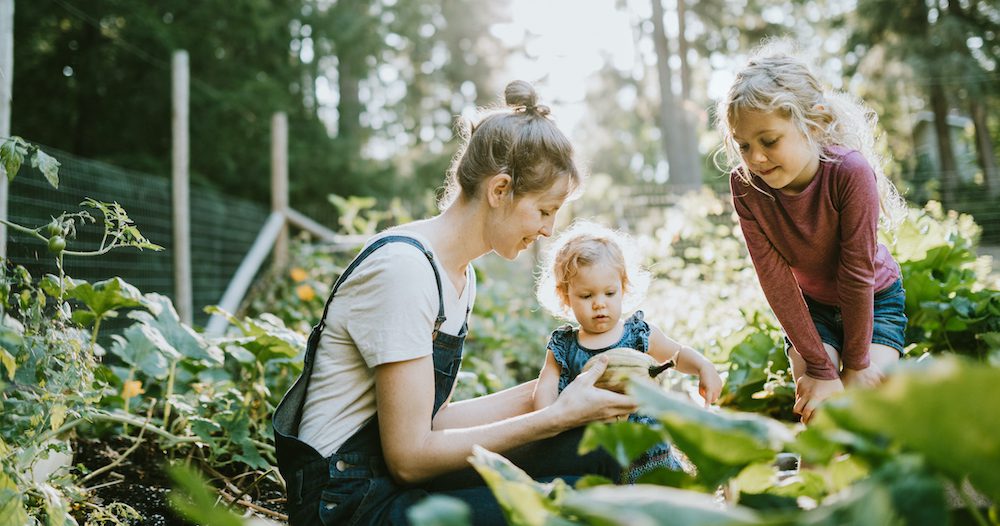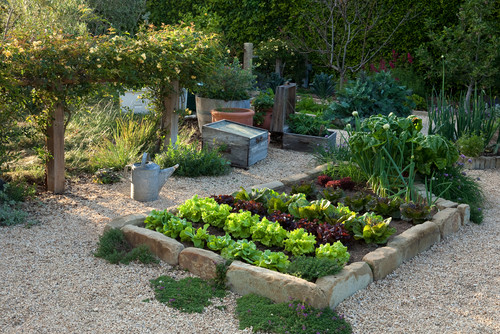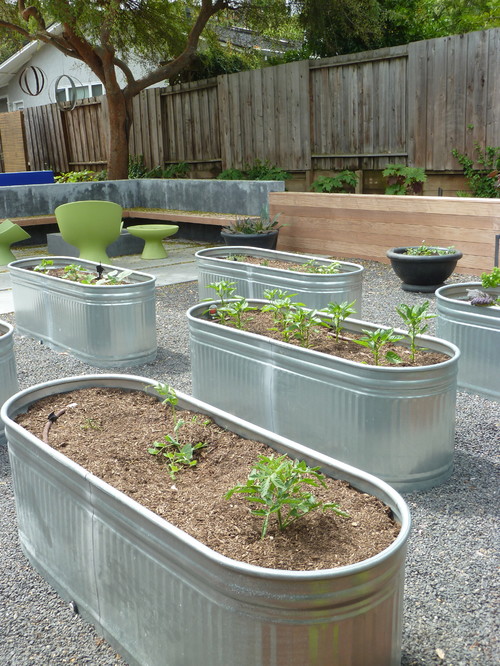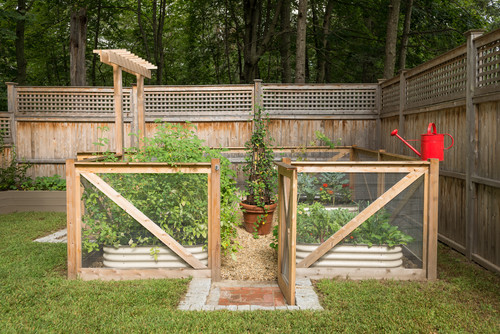
RyanJLane / Getty Images
Want your new vegetable garden to survive—and even thrive? You might need to start thinking hard about succession. And no, we’re not talking about corporate dynasties, or even the buzzy show on HBO. We’re talking about giving your sprouts room to grow.
In a nutshell, instead of putting all your seeds into the ground at once, succession planting involves staggering the sowing of crops every few weeks so you can harvest more manageably. This way, your garden will produce just enough veggies all season long, rather than a one-time explosion of zucchini that you’ll be forced to foist on your neighbors but will leave you squash-free for the rest of the summer.
Planting a succession of vegetables can actually be done in two ways. You can stagger your garden by planting the same seeds at regular intervals, or sow different seeds that mature at varied rates, switching from one to the next when the first has been harvested, explains Susan Brandt, the gardening professional at Blooming Secrets.
Newbie gardeners may want to try the former method and plant one veggie in succession.
“This way, it’s easier for homeowners to track what’s growing,” she adds.
Here’s more about the benefits of succession planting as well as what to sow and in which order so your table is full of tasty produce for weeks to come.
Succession planting benefits
Photo by Saucier + Flynn, Ltd.
Have a small yard? Succession planting maximizes the space you have, as it keeps your veggie haul steady, notes Brandt. It’s especially useful in warm climates where you can take advantage of a long growing season. And if lawn space isn’t available, you can employ succession planting in a series of container pots on a deck or patio.
Keep in mind that succession planting isn’t just for vegetable patches.
“You can use this method for growing flowers such as gladiolus—just plant them every two weeks, and you’ll have flowers for a good part of the summer, rather than just once,” Brandt says.
When to start a succession garden
Spring and early summer are ideal times to use the succession planting technique, say the pros.
“Start earlier in the season with cool-weather crops, move to summer veggies when it’s warmer, and then in the fall you can return to your same cool-weather picks or try different ones,” says Brandt.
Just be sure your options have enough time to grow from seeds or small plants to mature veggies at harvest time, adds JT Wilkinson, maintenance care manager at FormLA Landscaping.
Succession planting basics
Photo by Arterra Landscape Architects
Knowing how soon plants grow to maturity—and produce fruits and vegetables—is key to timing your succession garden just right. For example, here are the steps for planting spinach (or other leafy greens) in succession:
- Plant two small rows from seed, which will grow to maturity in about 30 to 45 days.
- At the 14-day mark, when the first crop has sprouted nicely, you can plant two more rows of spinach seed and weed the first rows as needed.
- At the 30-day mark, pick the larger leaves from your first rows (make salad!), and weed the second rows as needed.
- In two more weeks, the first crop will have mostly petered out, but the second wave will be nearly mature and ready to harvest. At this point, you can plant two more rows of spinach in the original rows, and repeat the whole process.
Succession gardening also takes the seasons into account, based on which plants flourish in certain temperatures. Here’s a look at what to plant first, second, and so on.
Best vegetables to plant in the spring
Photo by Sparrow Landscaping LLC
Leafy greens go into the ground first, including lettuce, spinach, and chard.
“You can also sow carrots, radishes, and beets at this time and these, along with green onions, are great for planting in multiple successions or sneaking them in between the plantings of other crops,” says Brandt.
“Green beans and some peas live a shorter life and stop producing after a few weeks of harvesting—and in the case of carrots and radishes, you’re pulling out the whole plant when you pick them so you need to continually sow,” she adds. For these root veggies, follow the same planting schedule outlined for lettuce above.
Best vegetables to plant in the summer
Photo by Pamela Crawford & Associates
Around June in much of the country, you can transition from your spring crops to summer crops, planting in the spaces where those peas and salad greens used to be.
Next up are tomatoes, eggplant, cucumbers, peppers, and squash, says Wilkinson.
In September, cool-season root veggies (beets, turnips) can be planted next.
“You can also go back to leafy greens in the fall, just as you did in spring,” says Brandt.
Remember, summer vegetables will produce multiple fruits, though they may also take a break if the weather is super steamy, then they’ll continue until the frost kills them.
Why succession crops require fertilizer
Fertilizing is key when it comes to succession planting as multiple rounds of sowing, weeding, and harvesting can do a number on your soil.
“You have to be careful if you grow lots of crops in the same space, since this technique uses up a lot of nutrients in the soil,” notes Brandt.
You can mitigate this by fertilizing plants so they get the right vitamins and adding compost to your garden between plantings.
The post Did You Plant Your Garden All Wrong? Try Succession Planting Instead appeared first on Real Estate News & Insights | realtor.com®.






No comments:
Post a Comment